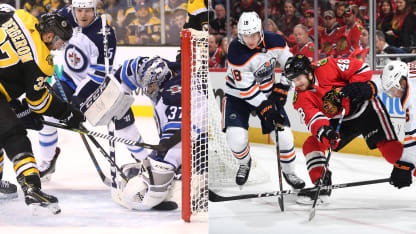CHICAGO -- Eleven points. That's all that separates the first- and last-place teams in the Central Division. It's not much, and it illustrates just how tight things have been through the first half of the season.
So how much tougher does it get in the second half?
"Even more intense than the first half, which has been pretty intense," said Chicago Blackhawks coach Joel Quenneville, whose team remains last in the Central following a 4-1 victory against the Edmonton Oilers on Sunday. "It doesn't give any clarity as to what's going to happen."
Central Division set up for wild second half of season
First-place Jets, last-place Blackhawks separated by 11 points


















